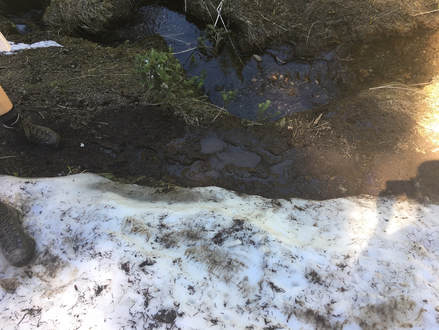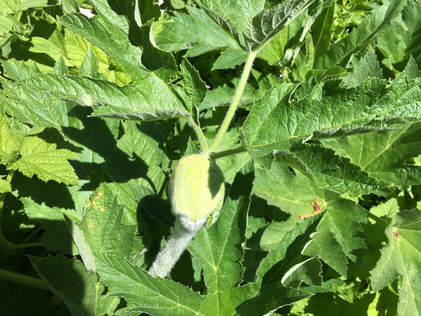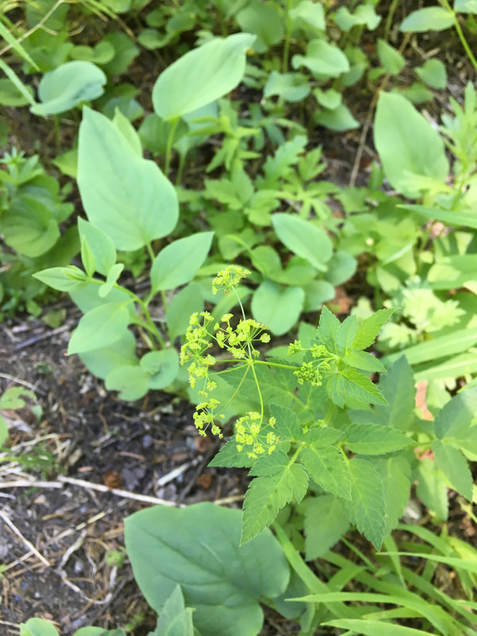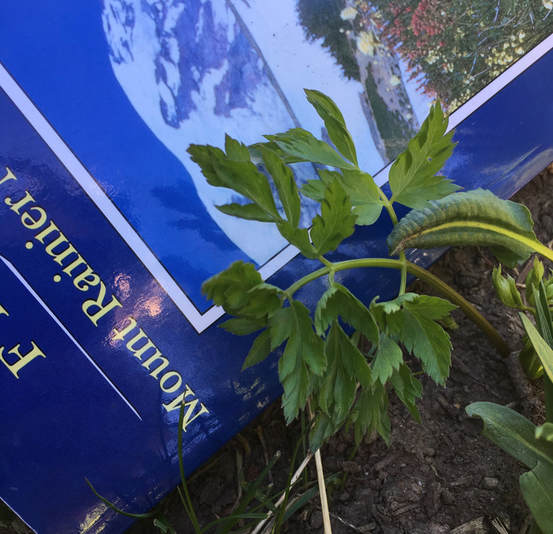Hey MeadoWatchers,
Plot markers are out and so are some of our focal species' flowers! I was out on the Glacier Basin Trail this
weekend, and the recent summer heat has melted the snow across most of the trail. There are still some
small patches of snow, above plot 8 (although I don't suspect it won't last too much longer), so be sure to
step carefully and try to prevent trail erosion!
We collected lots of great data and many of our focal species are budding and blooming, with some species
starting to set fruit (can you think of which early Glacier Basin species that might be?). Also, a big shout out
to all the MeadoWatchers I ran into during lunch time at the top of the trail! It was such a pleasure to chat
with you all!
Here are a couple of interesting species ID notes to keep in mind while you are hiking this trail!
Sharptooth Angelica look-a-likes: I spotted three species (all in the Apiaceae, or Carrot family) that look
similar to Sharptooth Angelica (Angelica arguta): Common Cow-parsnip (Heraclium maximum), Western
Sweet-cicely (Ozmorhiza occidentalis), and don't forget about the Lovages (Ligusticum spp.)!
- Cow-parsnip looks like Sharptooth Anglica on a body builder diet, in other words it is is much larger and
more robust, with large palmately lobed leaves and very hairy stems. Seen around plots 2 through 4.
- Western Sweet-cicely is much smaller and more delicate than Sharptooth Angelica. It can be slightly
confusing, as the leaves of O. occidentalis look like a shrunk down version of Sharptooth Angelica,
however, the flowers are green and the umble inflorescence is much smaller (only about 5-12 umbellets).
I spotted this species in plot 2, but keep an eye out for it else where.
- Lovage... Gray's? I spotted a Ligusticum spp. in plots 14 and 16. Since it was only the vegetation it's hard to
say which species it might be, but my best guess at this point is Gray's Lovage. Again, keep in mind, that
Gray's Lovage (Ligusticum gray) is much smaller and has more finely divided leaves than Sharptooth Angelica.
Hopefully, we can confirm which species it is later in the season (calling all MeadoWatch Botany enthusiasts!).
Plot markers are out and so are some of our focal species' flowers! I was out on the Glacier Basin Trail this
weekend, and the recent summer heat has melted the snow across most of the trail. There are still some
small patches of snow, above plot 8 (although I don't suspect it won't last too much longer), so be sure to
step carefully and try to prevent trail erosion!
We collected lots of great data and many of our focal species are budding and blooming, with some species
starting to set fruit (can you think of which early Glacier Basin species that might be?). Also, a big shout out
to all the MeadoWatchers I ran into during lunch time at the top of the trail! It was such a pleasure to chat
with you all!
Here are a couple of interesting species ID notes to keep in mind while you are hiking this trail!
Sharptooth Angelica look-a-likes: I spotted three species (all in the Apiaceae, or Carrot family) that look
similar to Sharptooth Angelica (Angelica arguta): Common Cow-parsnip (Heraclium maximum), Western
Sweet-cicely (Ozmorhiza occidentalis), and don't forget about the Lovages (Ligusticum spp.)!
- Cow-parsnip looks like Sharptooth Anglica on a body builder diet, in other words it is is much larger and
more robust, with large palmately lobed leaves and very hairy stems. Seen around plots 2 through 4.
- Western Sweet-cicely is much smaller and more delicate than Sharptooth Angelica. It can be slightly
confusing, as the leaves of O. occidentalis look like a shrunk down version of Sharptooth Angelica,
however, the flowers are green and the umble inflorescence is much smaller (only about 5-12 umbellets).
I spotted this species in plot 2, but keep an eye out for it else where.
- Lovage... Gray's? I spotted a Ligusticum spp. in plots 14 and 16. Since it was only the vegetation it's hard to
say which species it might be, but my best guess at this point is Gray's Lovage. Again, keep in mind, that
Gray's Lovage (Ligusticum gray) is much smaller and has more finely divided leaves than Sharptooth Angelica.
Hopefully, we can confirm which species it is later in the season (calling all MeadoWatch Botany enthusiasts!).
Don't forget to share your trail updates and ID notes with us on Facebook or email us pictures!
Happy IDing!
Your MeadoWatch Team (Emmi)
Happy IDing!
Your MeadoWatch Team (Emmi)





 RSS Feed
RSS Feed